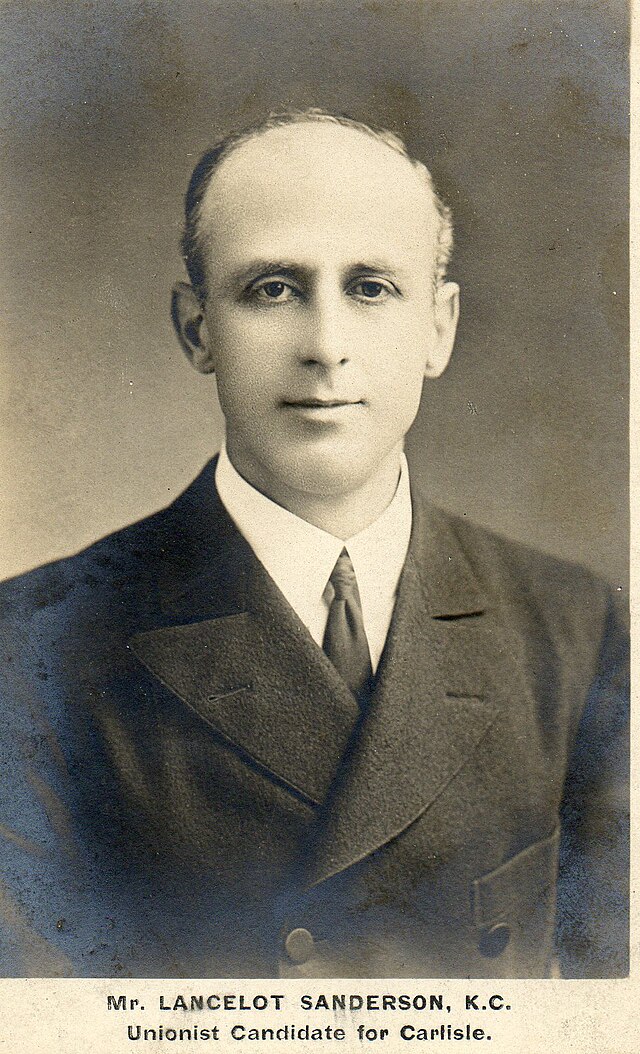Top Qs
Timeline
Chat
Perspective
Carlisle (UK Parliament constituency)
Parliamentary constituency in the United Kingdom, 1295 onwards From Wikipedia, the free encyclopedia
Remove ads
Carlisle is a constituency[n 1] in Cumbria represented in the House of Commons of the UK Parliament since 2024 by Julie Minns of the Labour Party.[n 2]
Remove ads
History
Carlisle has existed as a seat since the Model Parliament in 1295, returning two MPs to the House of Commons until 1885, when its representation was reduced to one MP by the Redistribution of Seats Act 1885. Under the 2023 boundary review the seat was expanded considerably into the border regions of Cumbria and redesignated as a county constituency.
From 1885 to 1922 the constituency was represented by the Liberal Party, since when it has alternated between Labour and Conservative, changing hands nine times. It was represented by Labour Party MPs from 1964 to 2010, albeit with a slim 0.2% majority in 1983. It was gained by John Stevenson of the Conservative Party in 2010 who held it until 2024, when it was won back by Julie Minns for Labour.
Remove ads
Boundaries
Summarize
Perspective
Historic
1918–1955: The County Borough of Carlisle.
1955–1983: As 1918 but with redrawn boundaries.
1983–1997: The City of Carlisle wards of Belah, Belle Vue, Botcherby, Currock, Denton Holme, Harraby, Morton, St Aidan's, Stanwix Urban, Trinity, Upperby, and Yewdale.
1997–2010: The City of Carlisle wards of Belah, Belle Vue, Botcherby, Burgh, Currock, Dalston, Denton Holme, Harraby, Morton, St Aidan's, St Cuthbert Without, Stanwix Urban, Trinity, Upperby, and Yewdale.
2010–2024: The City of Carlisle wards of Belah, Belle Vue, Botcherby, Burgh, Castle, Currock, Dalston, Denton Holme, Harraby, Morton, St Aidan's, Stanwix Urban, Upperby, Wetheral, and Yewdale.
Current
The 2023 Periodic Review of Westminster constituencies was carried out using the local authority structure as it existed in Cumbria on 1 December 2020 and is officially defined as:
- The City of Carlisle wards of: Belah & Kingmoor; Botcherby & Harraby North; Brampton & Fellside; Cathedral & Castle; Currock & Upperby; Denton Holme & Morton South; Harraby South & Parklands; Longtown & the Border; Newtown & Morton North; Sandsfield & Morton West; Stanwix & Houghton; Wetheral & Corby.[3]
With effect from 1 April 2023, the City of Carlisle council was abolished and absorbed into the new unitary authority of Cumberland.[4] Consequently, the constituency now comprises the following with effect from the 2024 general election:
- The Cumberland wards of Belah, Belle Vue, Botcherby, Brampton, Castle, Corby and Hayton, Currock; Dalston and Burgh (small part), Denton Holme; Harraby North, Harraby South, Houghton and Irthington, Longtown, Morton, Stanwix Urban, Upperby. Wetheral (majority) and Yewdale.[5]
The constituency was expanded to bring the electorate within the permitted range by transferring the parts of the former City of Carlisle local authority previously in the abolished constituency of Penrith and The Border - comprising the towns of Brampton and Longtown and surrounding villages and rural areas. To partly offset this, Dalston was included in the new constituency of Penrith and Solway.
Remove ads
Members of Parliament
Summarize
Perspective
MPs 1295–1640
- 1640–1644: Sir William Dalston, Bt (Royalist) – disabled to sit, January 1644
- 1640–1648 : Richard Barwis (Parliamentarian) – died April 1648
- 1645(?)–1648(?): Thomas Cholmley – not recorded as having sat after Pride's Purge, December 1648
- 1649: Edward Howard, 1st Baron Howard of Escrick, from House of Lords[11]
- 1653: Carlisle was unrepresented in the Barebones Parliament.
First Protectorate Parliament (One member only)
- 1654–1655: Colonel Thomas Fitch
Second Protectorate Parliament (One member only)
- 1656–1658: George Downing
- 1659: George Downing
- 1659: Thomas Craister
Long Parliament (restored)
- 1659–1660: Thomas Cholmley
- 1659–1660: Edward Howard, 1st Baron Howard of Escrick
MPs 1660–1885
MPs since 1885
Remove ads
Election results
Summarize
Perspective
Elections in the 2020s
Elections in the 2010s
This was the largest UKIP vote share at the 2019 general election.[38]
Elections in the 2000s
Elections in the 1990s
Elections in the 1980s
Elections in the 1970s
Elections in the 1960s
Elections in the 1950s
Election in the 1940s
Elections in the 1930s
General election 1939–40: Another general election was required to take place before the end of 1940. The political parties had been making preparations for an election to take place and by the Autumn of 1939, the following candidates had been selected;
- Conservative: Edward Spears
- Labour: Percy Barstow[60]
- Liberal: Leslie H. Storey[61]
Elections in the 1920s

Elections in the 1910s

A General Election was due to take place by the end of 1915. By the summer of 1914, the following candidates had been adopted to contest that election. Due to the outbreak of war, the election never took place.
- British Socialist Party: Ernest Lowthian[63]
Elections in the 1900s



Elections in the 1890s
Elections in the 1880s
Elections in the 1870s
Elections in the 1860s
- Caused by Graham's death.
Elections in the 1850s
- Caused by Graham's appointment as First Lord of the Admiralty
Elections in the 1840s
- Caused by the previous election being declared void on petition due to the "several acts of treating".[74]
Elections in the 1830s
Elections in the 18th century
Election results taken from the History of Parliament Trust series.
- Death of Hylton
- Note: Stanwix was unseated on petition and replaced by Hylton, 26 January 1742
- Stanwix appointed Governor of Kingston-upon-Hull
Remove ads
See also
Notes
- A borough constituency (for the purposes of election expenses and type of returning officer)
- As with all constituencies, the constituency elects one Member of Parliament (MP) by the first past the post system of election at least every five years – from 1295 until 1885 it had the right to send two MPs in most years.
References
External links
Wikiwand - on
Seamless Wikipedia browsing. On steroids.
Remove ads



